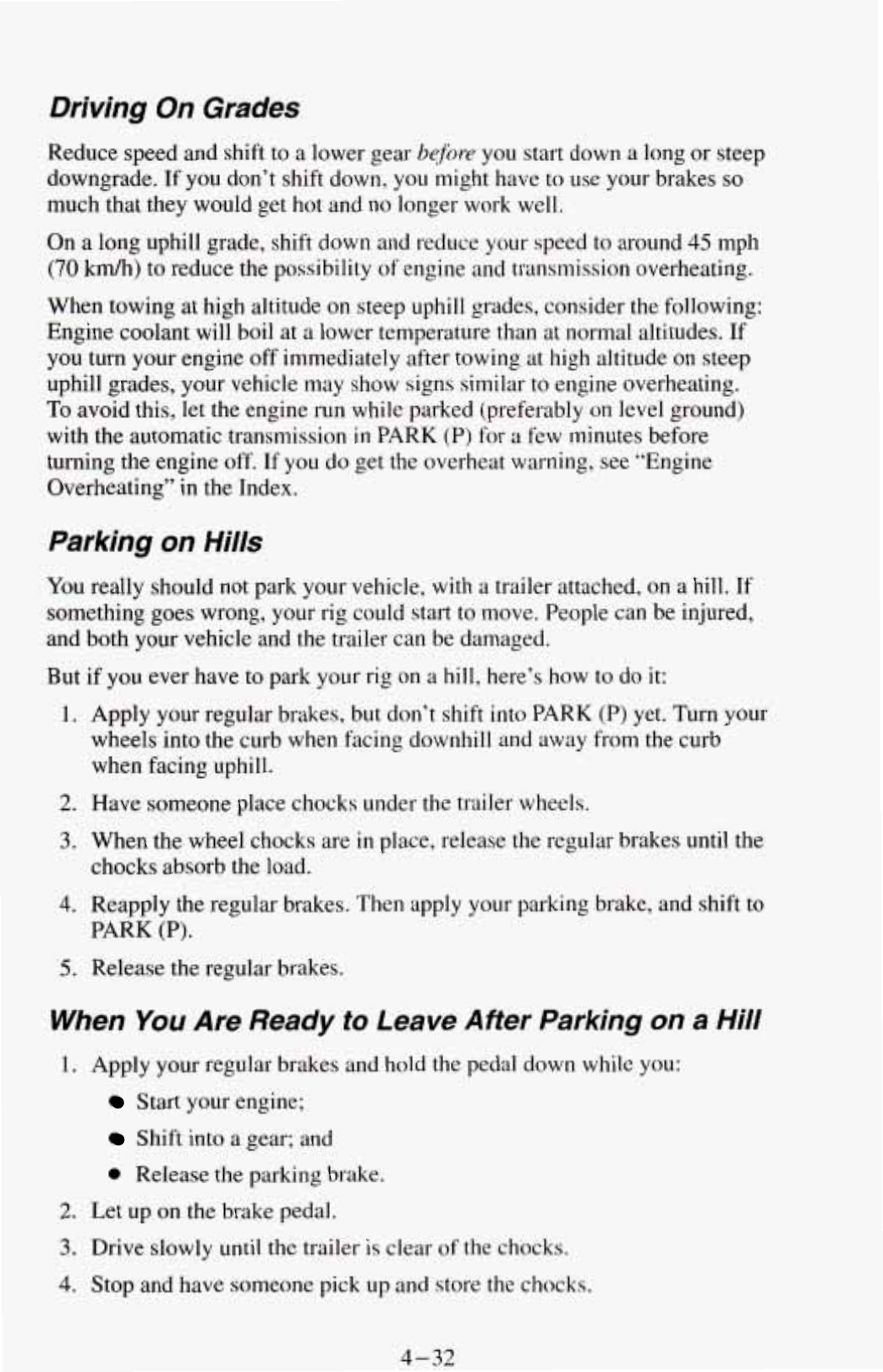
Driving On Grades
Reduce speed and shift to
a
lower gear
before
you
start down a long or steep
downgrade. If
you
don’t shift down, you might have
to
use your brakes
so
much that they would get
hot
and no longer work well.
On a long uphill grade, shift down and reduce your speed to around
45
mph
(70
km/h) to reduce the possibility
of
engine and transmission overheating.
When towing at high altitude
on
steep uphill grades, consider the following:
Engine coolant will boil at
a
lower temperature
than
at normal altitudes. If
you turn your engine off immediately after towing at high altitude on steep
uphill grades, your vehicle may show signs similar to engine overheating.
To
avoid this, let the engine run while parked (preferably
on
level ground)
with the automatic transmission
in
PARK (P)
for
a
few minutes before
turning the engine off. If you do get the overheat warning, see “Engine
Overheating”
in
the Index.
Parking on Hills
You really should not park your vehicle, with
a
trailer attached, on a
hill.
If
something goes wrong, your rig could start to move. People can be injured,
and both your vehicle and the trailer can be damaged.
But if
you
ever have to park your rig on a hill, here’s how to do
it:
1. Apply your regular brakes, but don’t shift into
PARK
(P)
yet. Turn your
wheels into the curb when facing downhill and away from the curb
when facing uphill.
2.
Have someone place chocks under the trailer wheels.
3.
When the wheel chocks are
in
place, release the regular brakes until the
chocks absorb the load.
4.
Reapply the regular brakes, Then apply your parking brake, and shift to
5.
Release the regular brakes.
PARK
(P).
When
You
Are Ready
to
Leave After Parking
on
a Hill
1.
Apply
your regular brakes and hold the pedal down while you:
Start your engine;
Shift into a gear; and
0
Release the parking brake.
2.
Let up
on
the brake pedal.
3.
Drive slowly
until
the
trailer
is
clear of the chocks.
4.
Stop and have someone pick up and store the chocks.
4-32


















